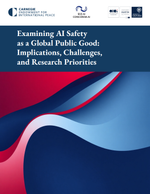Nature Chemistry
Arron C. Deacy, Alexander F. R. Kilpatrick, Anna Regoutz & Charlotte K. William https://doi.org/10.1038/s41557-020-0450-3
View Journal Article / Working PaperCarbon dioxide and epoxide copolymerization is an industrially relevant means to valorize waste and improve sustainability in polymer manufacturing. Given the value of the polymer products—polycarbonates or polyether carbonates—it could provide an economic stimulus to capture and storage technologies. The process efficiency depends upon the catalyst, and previously Zn(II)Mg(II) heterodinuclear catalysts showed good performances at low carbon dioxide pressures, attributed to synergic interactions between the metals. Now, a Mg(II)Co(II) catalyst is reported that exhibits significantly better activity (turnover frequency > 12,000 h−1) and high selectivity (>99% CO2 utilization and polycarbonate selectivity) for carbon dioxide and cyclohexene oxide copolymerization. Detailed kinetic investigations show a second-order rate law, independent of CO2 pressure from 1–40 bar, to produce polyols. Kinetic data also reveal that synergy arises from differentiated roles for the metals in the mechanism: epoxide coordination occurs at Mg(II), with reduced transition state entropy, while the Co(II) centre accelerates carbonate attack by lowering the transition state enthalpy. This rare insight into intermetallic synergy rationalizes the outstanding catalytic performance and provides a new feature to exploit in other homogeneous catalyses.




